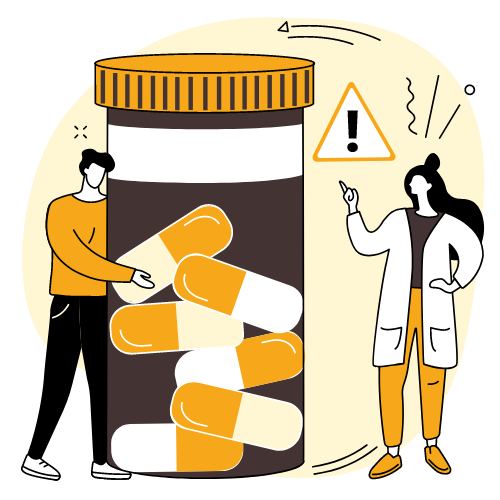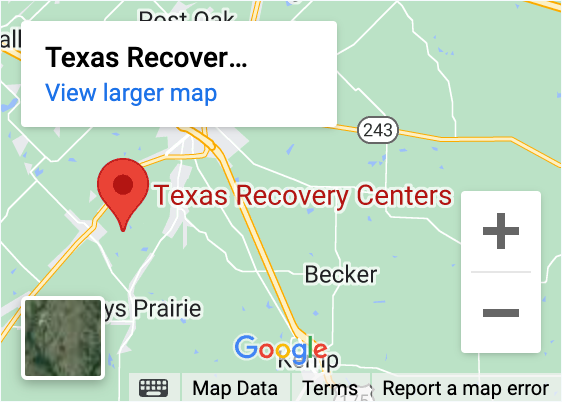Watching someone you care about struggle with addiction can be a heart-wrenching experience. It’s tough to watch your loved one’s life spiral out of control, and it’s even more challenging to know what to do about it. When it comes to addiction, intervention is often the last option on the list to get your loved one the treatment for addiction they need.
Staging an intervention can be an incredibly daunting task. It’s normal to feel unsure about what to do or say, and you may worry about the consequences of your intervention. That’s why we’ve put together this guide for the loved ones of a person with addiction.
In this guide, we’ll explain what addiction intervention is, why it’s important, and walk you through step-by-step instructions on how to stage an intervention for your loved one.
Step 1: Gather Support for the Addiction Intervention
Before you stage an intervention, it’s essential to have a support network in place. You need other people who care about your loved one and want to help them overcome their addiction. Friends, family, and professionals are all excellent resources. Ideally, you’ll want to assemble people who can address the person’s behavior in an authentic and compelling way.
Step 2: Educate Yourself About Addiction and Intervention
The more you know about addiction, the better equipped you’ll be to stage a successful intervention. If you’ve reached the stage where an addiction intervention seems necessary, then chances are you already know a bit about the consequences of drug or alcohol abuse. But broadening your understanding can only help to make an intervention more likely to succeed.
It is just as important to learn as much as you can about intervention for addiction. Some aspects of it can seem counterintuitive and don’t come naturally to people.
One of the biggest is probably the concepts of codependency and enabling. This can be the hardest of all for the parents of someone with an addiction. A parent’s natural instinct is to sacrifice and do whatever they can for a child, even an adult child.
How Codependency and Enabling Can Undermine an Intervention
Intervention for addiction doesn’t run contrary to that, but it can challenge that instinct. A codependent parent can feel compelled to keep a child happy no matter what, even if what makes them happy at the moment is some cash, which they claim they’ll use to pay bills, but will go towards drugs.
In order for an intervention to be successful, everyone involved must not enable the person who is addicted to continue their behavior. Everyone must “hold the line” and stick to boundaries that have been set. Even when this is done flawlessly, there is no guarantee that an addiction intervention will succeed, but there is perhaps no single factor that helps more.
Educating yourself about addiction and intervention:
- Learn as much as you can about the substance(s) the person is using.
- Make sure that you understand codependency and enabling so you can avoid them.
- Gain a complete understanding of setting boundaries and why they are important.
- Get a book about interventions and read it.
Step 3: Plan the Intervention
Planning an intervention involves deciding who will be present for it, what you will say, and what consequences will exist if your loved one does not take action. There are several great books written on the subject, and we suggest starting with one or more of them rather than trying to “wing it.”
An intervention for a substance use disorder must have a single person who is in charge of staging the intervention. The best case scenario is for this to be someone who isn’t related to or emotionally tied to the person being intervened upon. The stager of the intervention needs to be as objective as possible and “stick to the script.”
Staging a Successful Addiction Intervention
Someone in the throes of addiction will often try to do almost anything to manipulate their way out of going to treatment. Ideally, you would hire a professionally trained and certified interventionist and for everyone involved to follow what they say to the letter. A professional intervention can cost from $1,500 to $5,000 or more, however.
Not everyone has the resources for this. In that case, someone else who has the right temperament can step in. A counselor, pastor, church or community leader, respected elder, or even a favorite sports coach may be able to help stage the intervention. If the addicted person is connected to a 12-step program like AA or NA, you can also contact his or her sponsor and ask for help with a “12-Step Call”.
In planning an intervention, remember to:
- Hire a professional interventionist if at all possible.
- Hold the line, maintain boundaries, and “stick to the script.”
- Have a rehab already selected which you know takes your insurance and has a bed.
- Make transportation plans to get the person to treatment.
- Have contingency plans, i.e., what to do if the person runs away, etc.
Step 4: Hold the Intervention
Suppose you’ve put in the work of assembling a support network and planning an intervention. In that case, the next step is to hold the intervention with your loved one. Be prepared for resistance and defensiveness.
Emphasize that you are only motivated by love and concern. Remember that the goal of the interventions is to stop the addiction in its path and get the person to accept help and addiction treatment. In planning the intervention, you will have
Step 5: Follow Up on the Intervention
After holding the intervention, it’s critical to follow up with your loved one. They may be in denial or reluctant to accept an interruption because your loved one doesn’t want to let you down. Remember that as an elder, you must be patient and persistent in following up with your loved one to ensure that they receive the help they require.
A successful intervention should culminate in that person immediately preparing to enter treatment for addiction. The best case scenario would be an admission within 24-48 hours or less. This is why planning in advance is so important.
The last thing you want to do is have an intervention that ends in a person accepting help, only to struggle to find an appropriate rehab with an available bed afterward and lose momentum. Even a person who agrees to accept help may lose their nerve after 24-48 hours and back out. The old saying “strike while the iron is hot” really applies here. Time is of the essence in an addiction intervention.
Texas Recovery Centers can Help
The team at Texas Recovery Centers is ready to help you get the help you need for the person you love. Our Texas rehab offers everything from drug and alcohol detox to residential addiction treatment and our aftercare and alumni programs are second to none. All the resources your loved one needs to overcome addiction are here. If you or someone you care about might benefit from our addiction treatment programs, reach out to Texas Recovery Center today at 214-295-6503 or contact us online.













